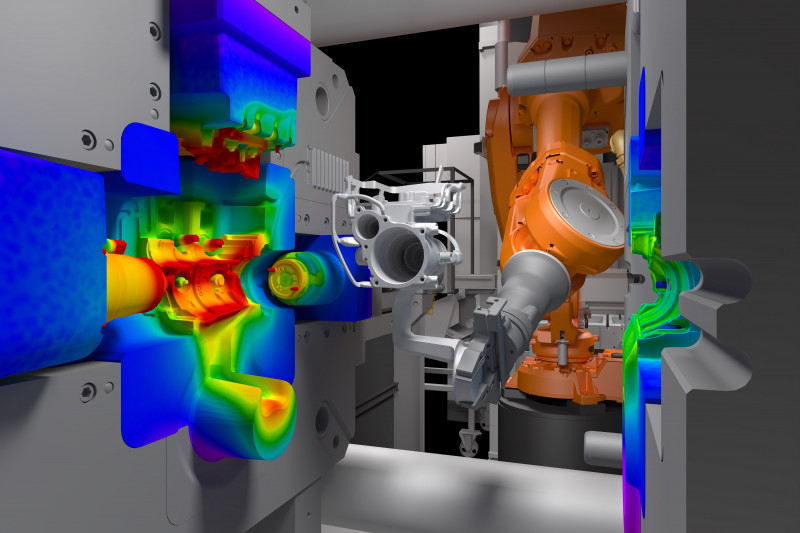Introduction
Die casting is a widely used manufacturing process that utilizes reusable molds, called dies, to produce high-quality metal parts with excellent dimensional accuracy. The die casting industry plays a crucial role in various sectors, including automotive, aerospace, and consumer electronics. As the demand for complex and intricate parts continues to grow, optimizing die casting design becomes essential to enhance manufacturing efficiency. This article explores the key aspects of die casting design and presents strategies to optimize it for improved productivity and cost-effectiveness.
1. Material Selection
The choice of material is a critical factor in die casting design. Aluminum, zinc, and magnesium alloys are commonly used due to their exceptional strength-to-weight ratio and excellent casting properties. The material selection should consider the desired mechanical properties, corrosion resistance, and thermal conductivity requirements of the final part. Conducting material testing and analysis can help identify the most suitable alloy for the die casting process, ensuring optimal performance and manufacturing efficiency.
2. Part Design
The part design affects both the manufacturability and functionality of die cast components. Designers should aim to simplify the part geometry to minimize the number of features that require intricate machining or secondary operations. Features like undercuts, thin walls, and sharp corners should be avoided or appropriately modified to facilitate the flow of molten metal during the casting process. By optimizing the part design for die casting, manufacturers can reduce production costs, cycle time, and the risk of defects.
3. Gate and Runner Design
The gate and runner system is responsible for delivering molten metal into the die cavity during the casting process. Proper gate and runner design is crucial to ensure uniform filling, minimize turbulence, and prevent defects such as air entrapment and porosity. The size, location, and shape of the gate should be carefully selected based on the part geometry, material, and expected flow characteristics. Advanced simulation software can assist in optimizing gate and runner design, leading to improved manufacturing efficiency and part quality.
4. Cooling System Design
Efficient cooling is essential to achieve shorter cycle times and maintain dimensional accuracy in die casting. The cooling system design should provide uniform cooling across the die cavity to avoid thermal gradients that can cause warping or cracking of the final part. The placement and design of cooling channels should be optimized to maximize heat transfer and minimize cycle time. Utilizing conformal cooling, which involves integrating cooling channels into the die itself, can further improve cooling efficiency and reduce energy consumption.
5. Mold Design
The mold design directly affects the quality and productivity of die casting. It should be robust, durable, and capable of withstanding high temperatures and pressures. The mold material, such as tool steel, should be selected based on the expected production volume and part complexity. Additionally, incorporating features like ejector pins, slides, and lifters into the mold design can facilitate the removal of the finished part and reduce the need for manual intervention, thereby improving manufacturing efficiency.

6. Process Optimization
Optimizing the die casting process parameters can significantly enhance manufacturing efficiency. Factors such as melt temperature, injection speed, and pressure need to be carefully controlled to ensure consistent part quality and minimize defects. Process monitoring and control systems can be implemented to continuously monitor key process variables and make real-time adjustments, resulting in improved productivity, reduced scrap rates, and enhanced overall efficiency.
Conclusion
Optimizing die casting design is crucial for achieving enhanced manufacturing efficiency. By carefully selecting the appropriate material, simplifying the part design, optimizing the gate and runner system, designing an efficient cooling system, and utilizing robust molds, manufacturers can reduce production costs, cycle time, and defects. Furthermore, process optimization through monitoring and control systems can help achieve consistent part quality and improved overall efficiency. By implementing these strategies, die casting manufacturers can stay competitive in an increasingly demanding market and meet the growing demand for high-quality, complex parts.
-

- Magensium mountain bike frame
-

- Леене под налягане от магнезиева сплав Авточасти Странично стъпало Подложка
-

- Фабрично персонализирани китайски велосипеди Bmx Road Sport Детски велосипед 12 16 18 20 инча Велосипед Mtb за деца 6-10 години
-

- Компоненти за тиксоформоване от магнезиева сплав
-

- Твърда вилка от магнезиева сплав за персонализирани метални части за леене под налягане на велосипед
-

- Високопрецизни магнезиеви тиксоформовани компоненти Капак на UAV

 0086-750-5616188
0086-750-5616188 +86 13392089688
+86 13392089688 sales@zhongmei-tech.com
sales@zhongmei-tech.com







